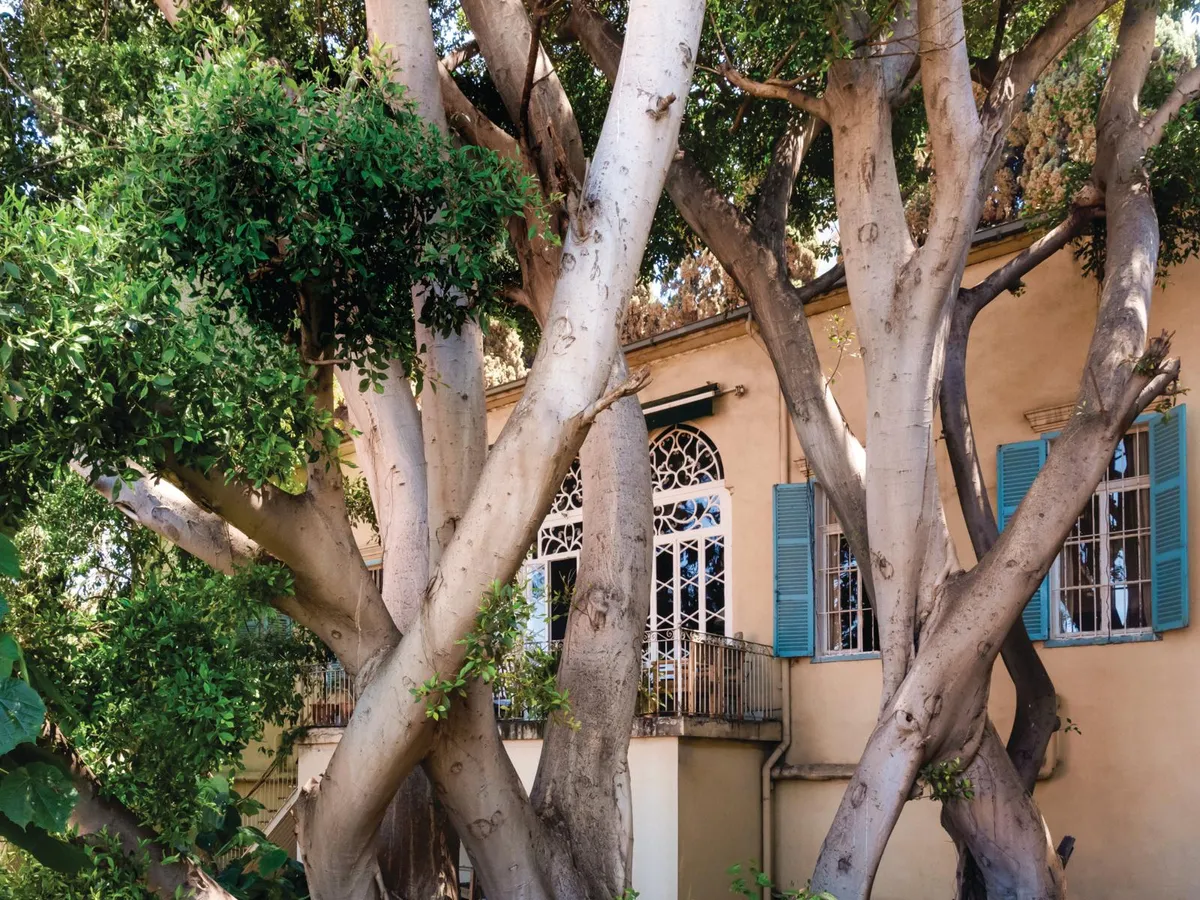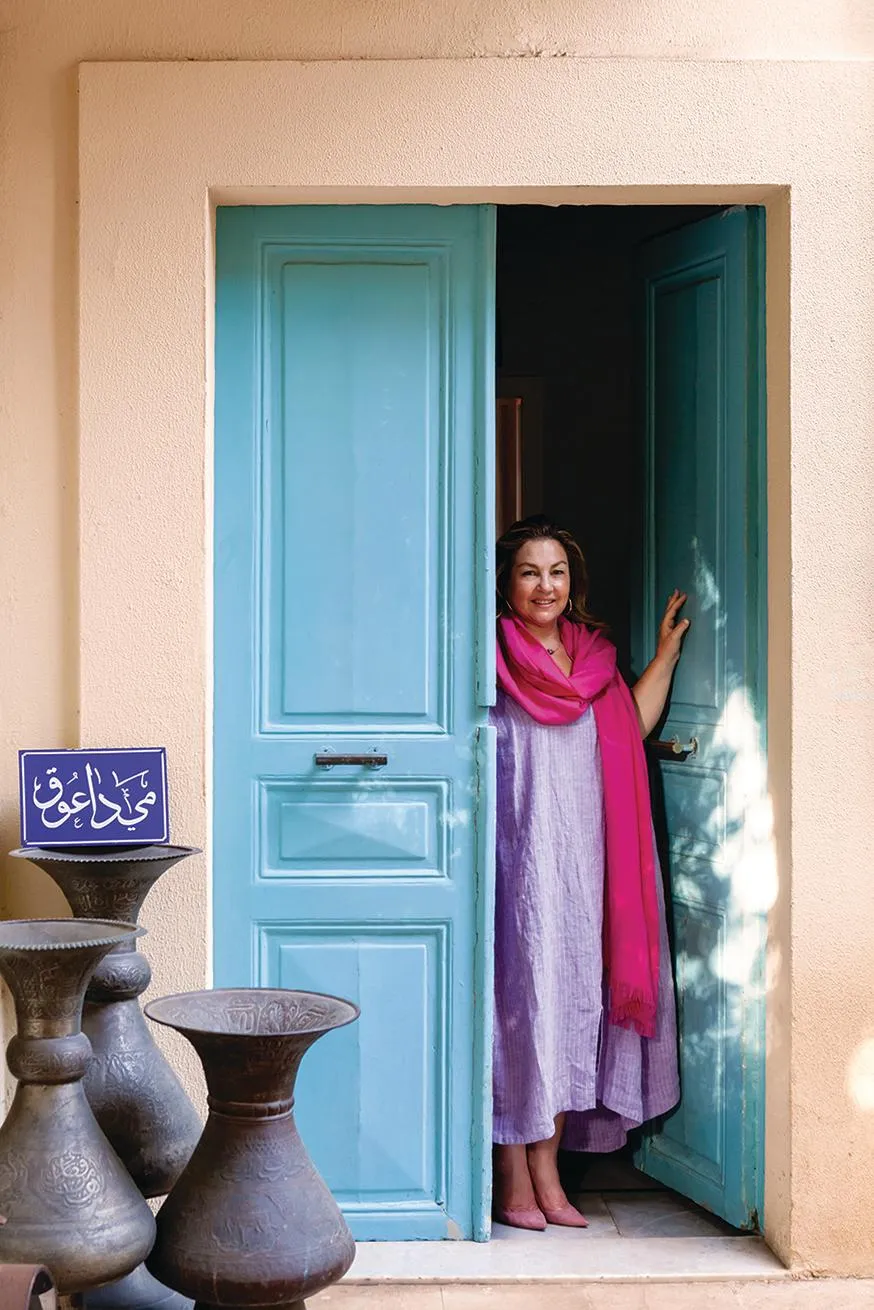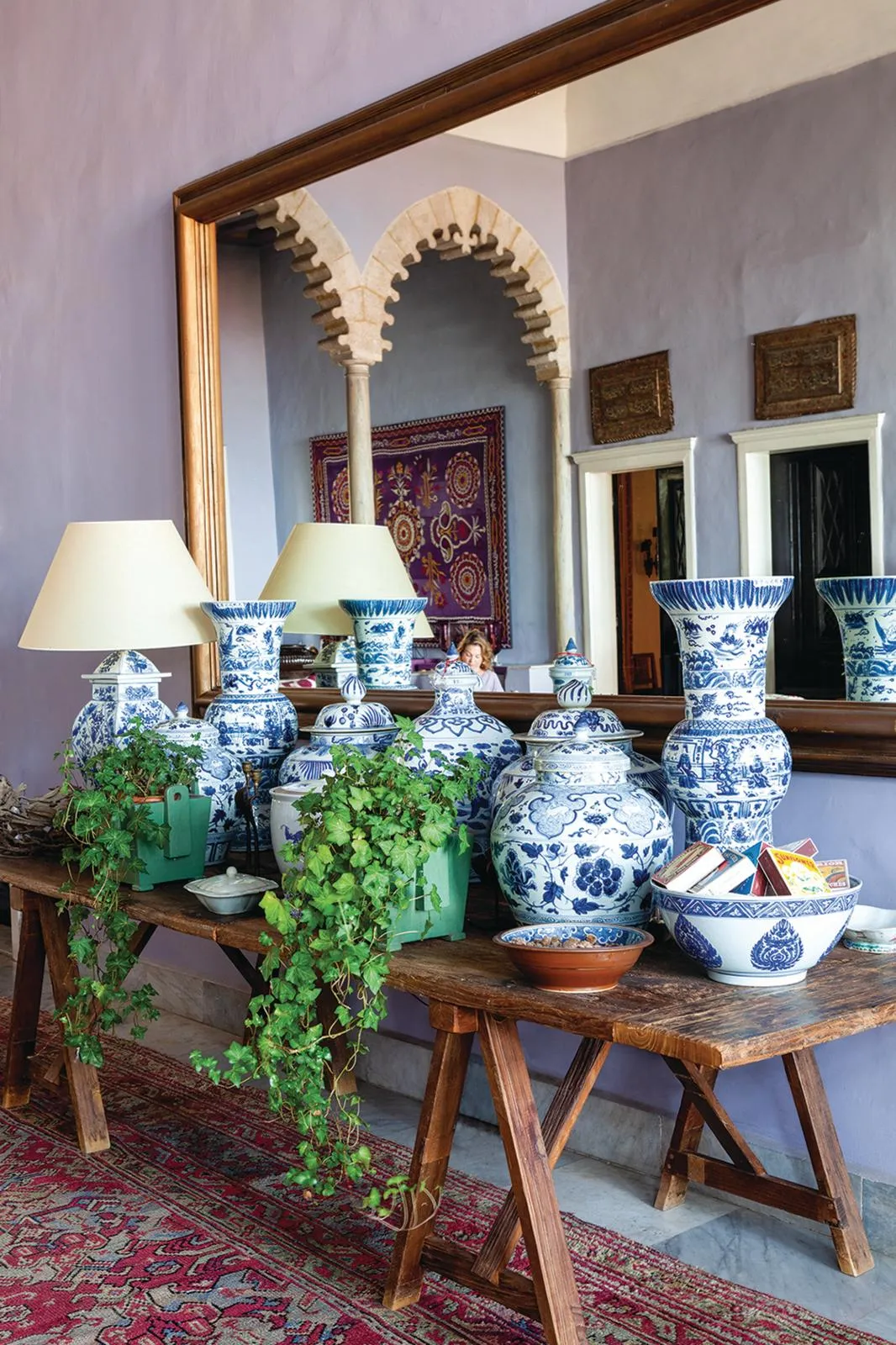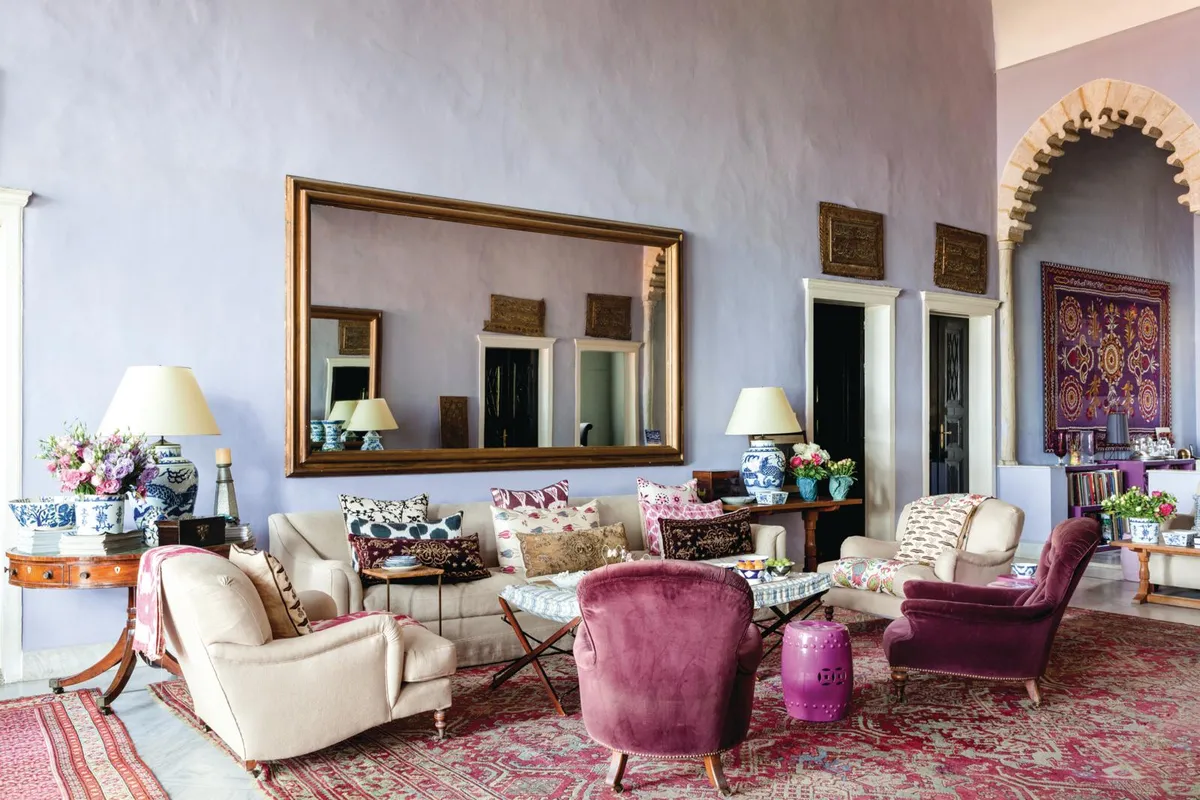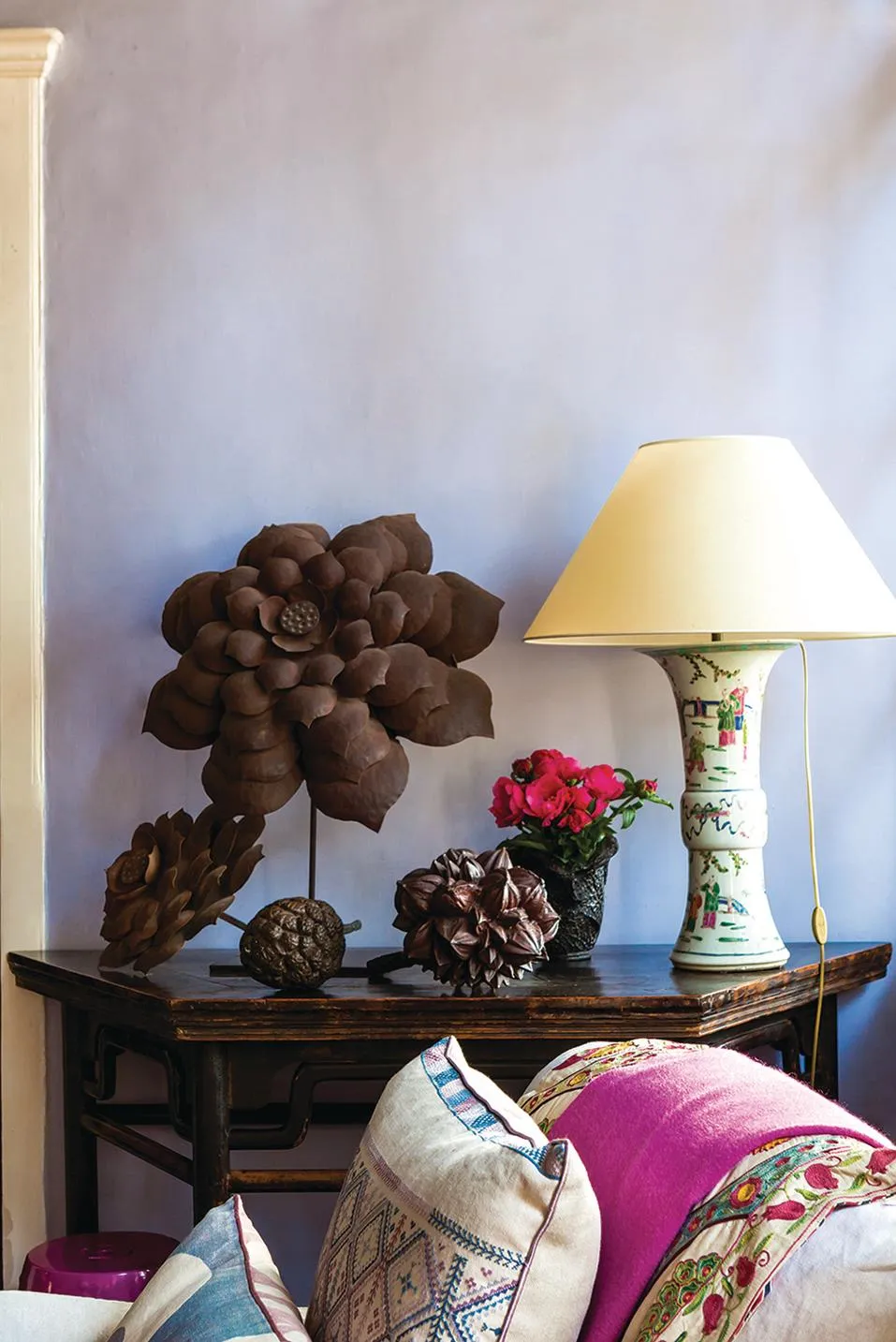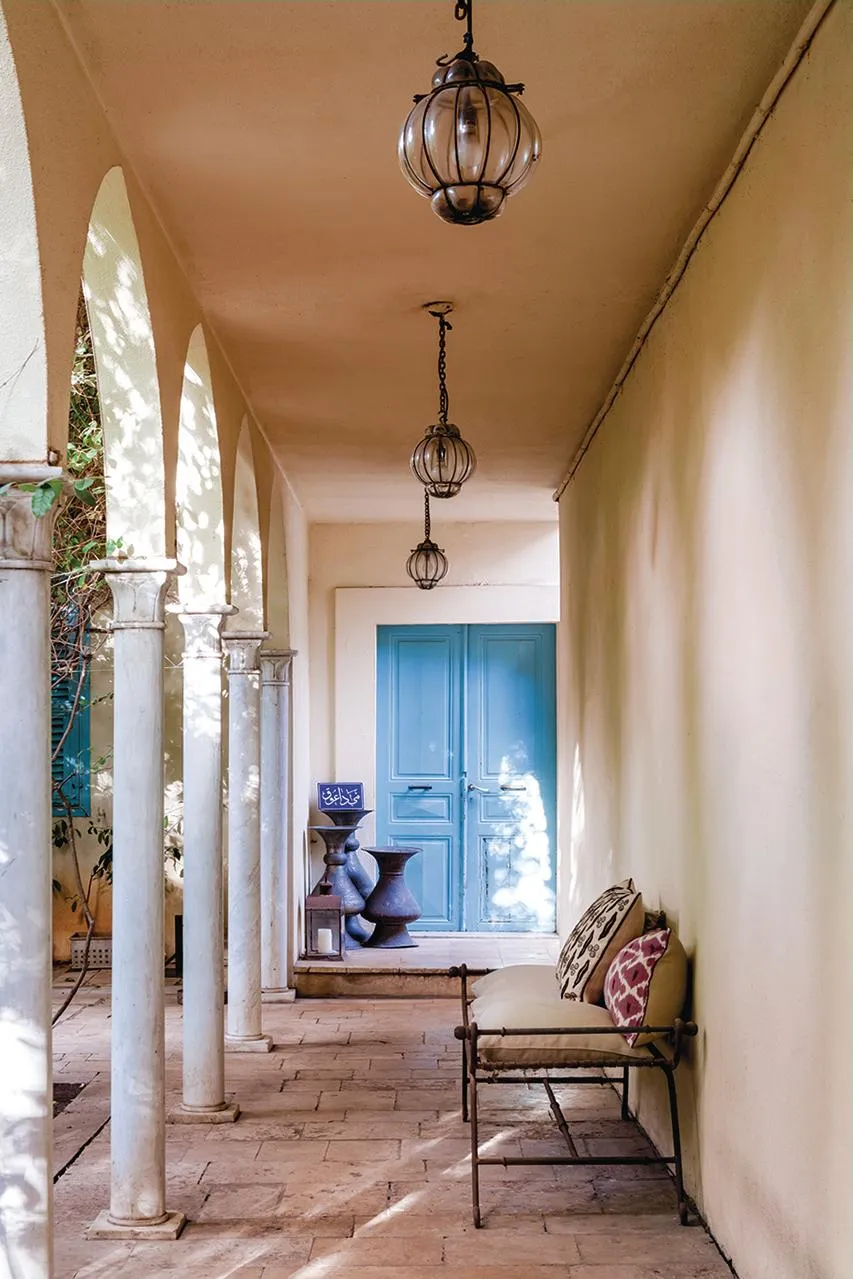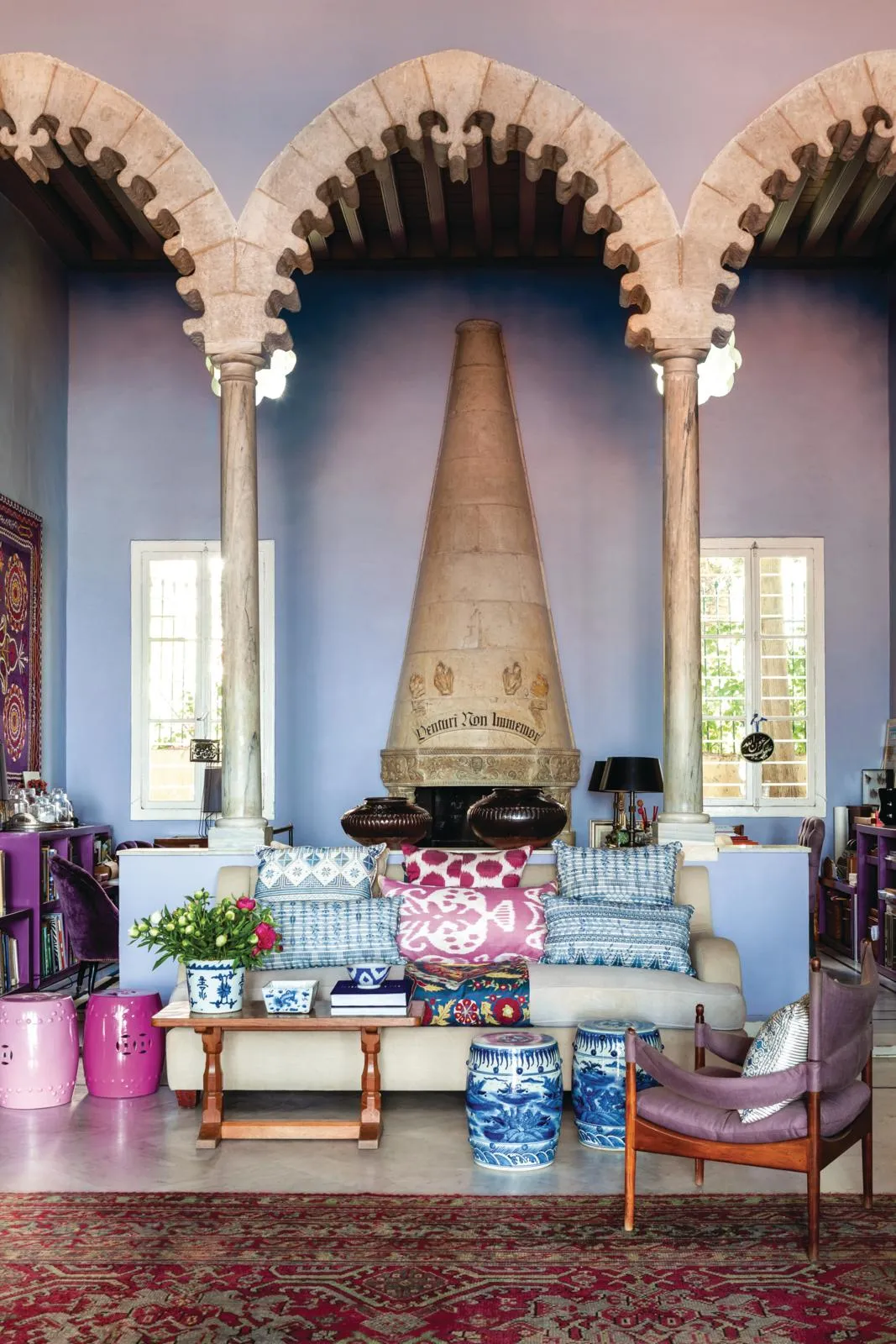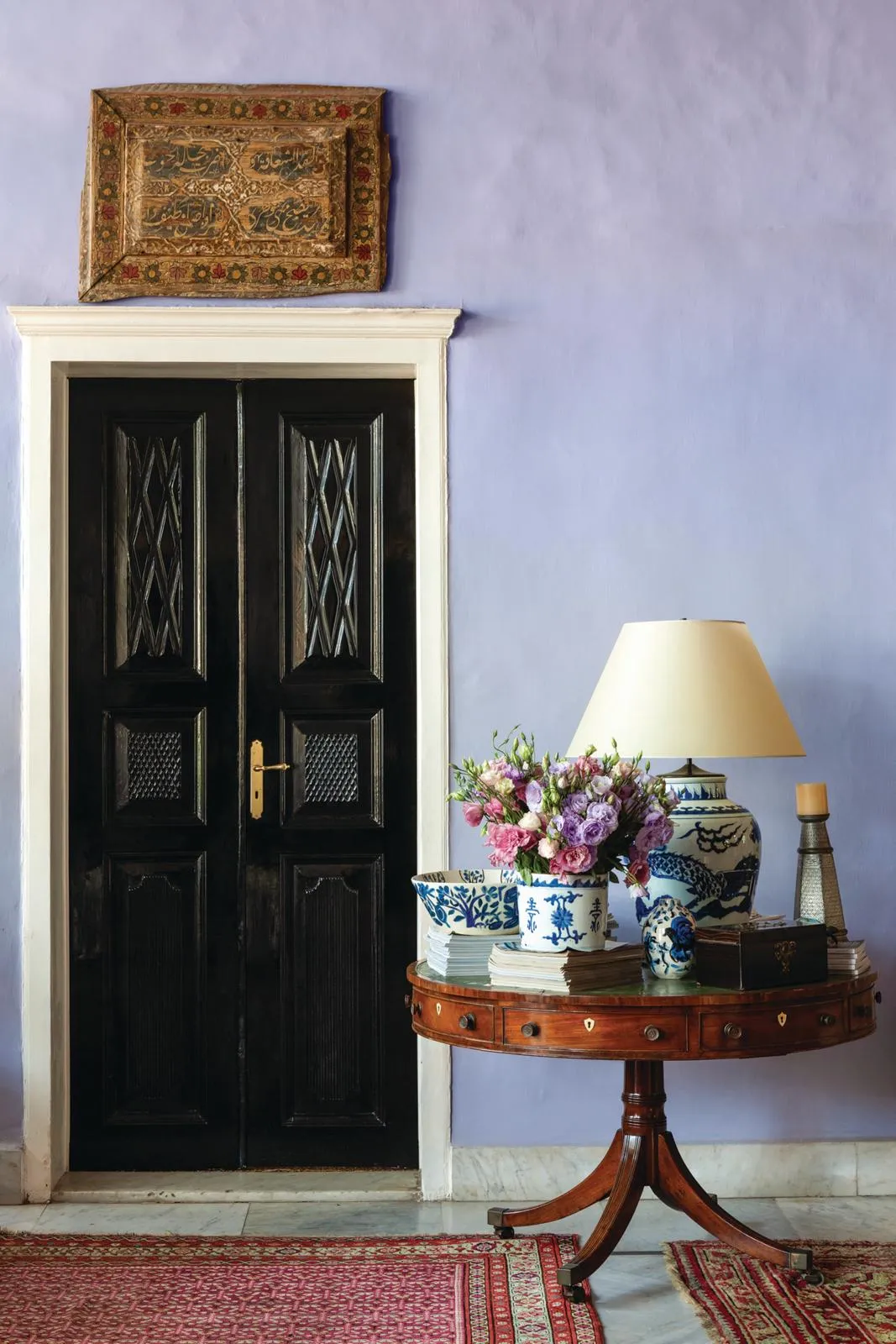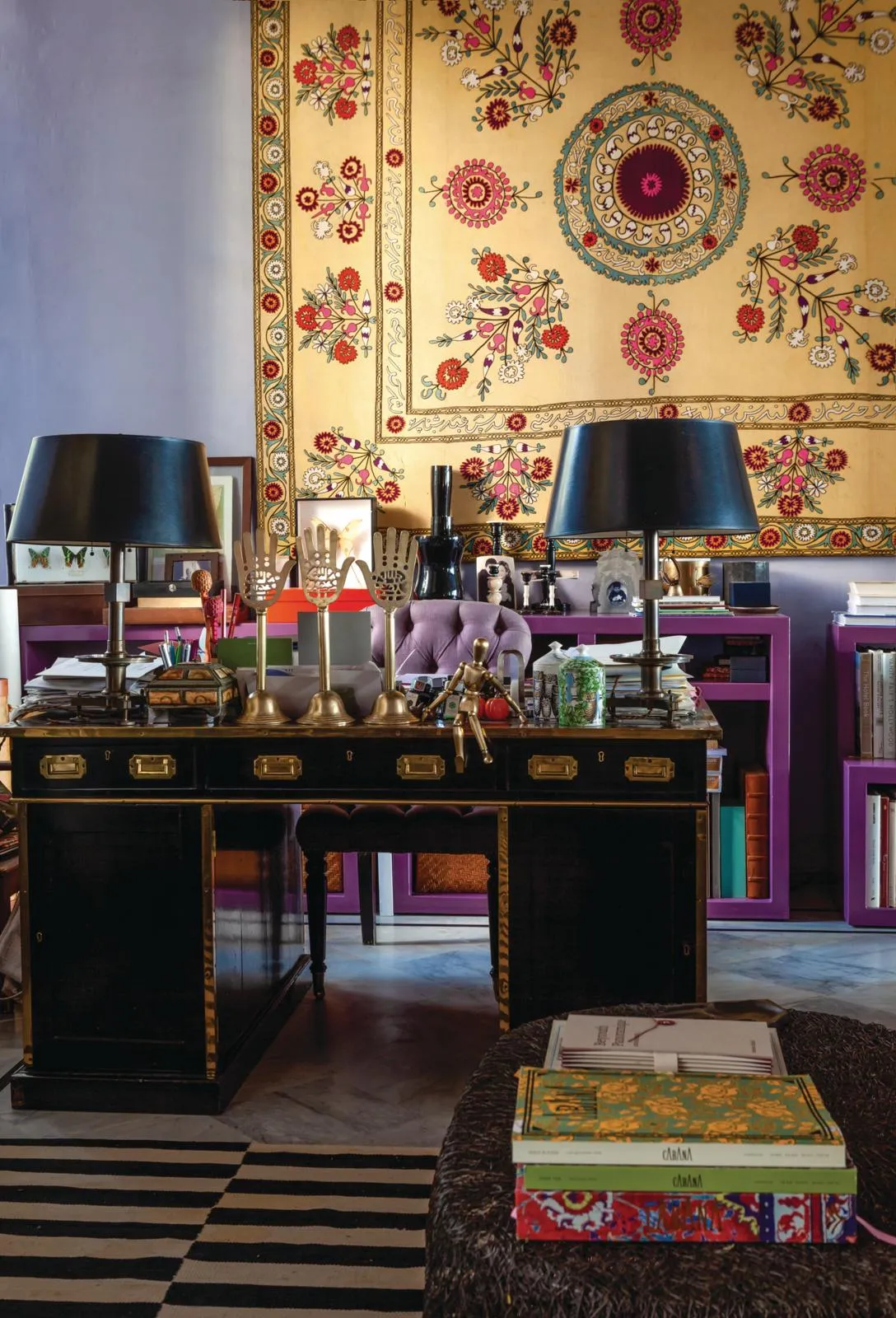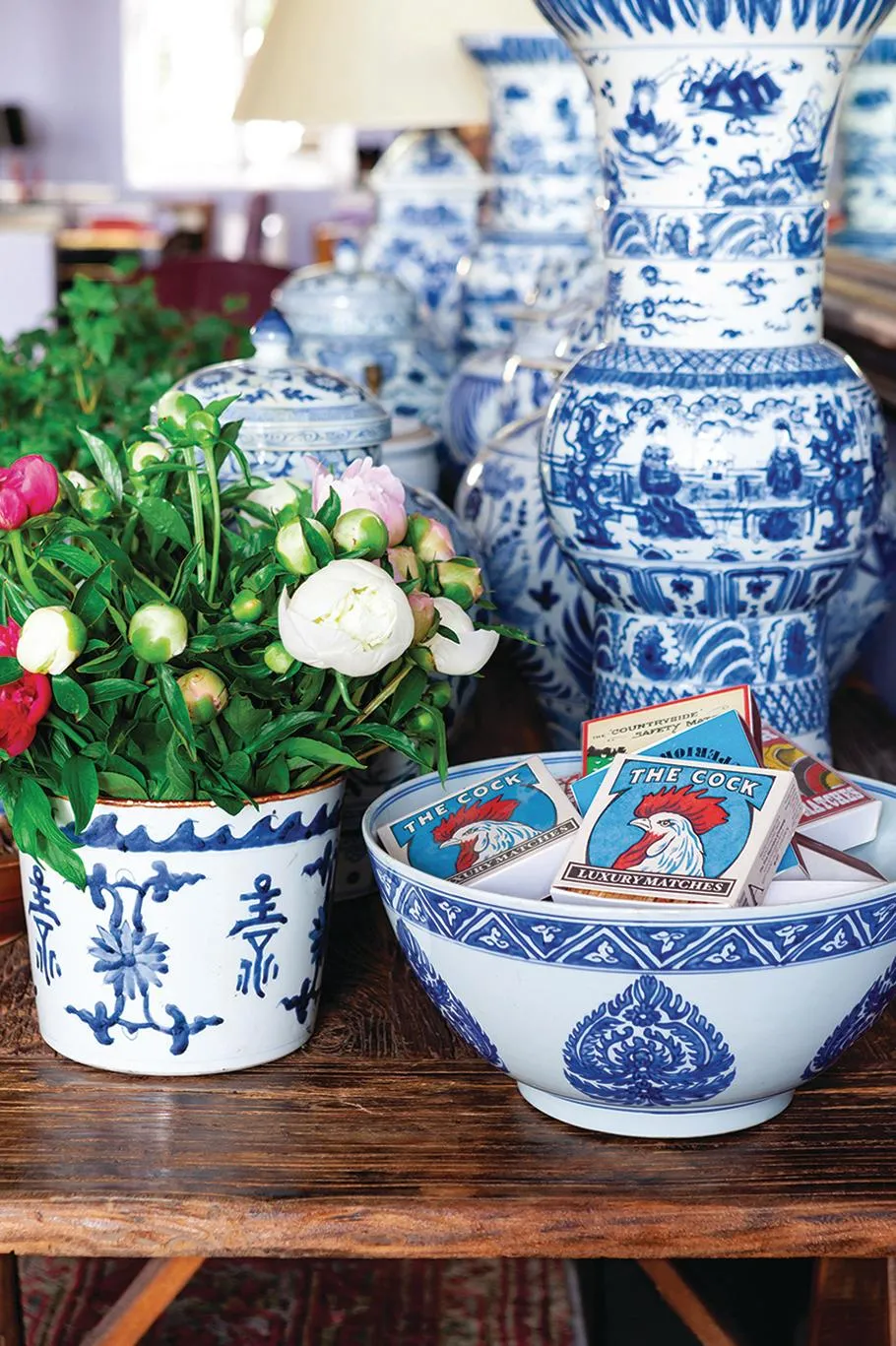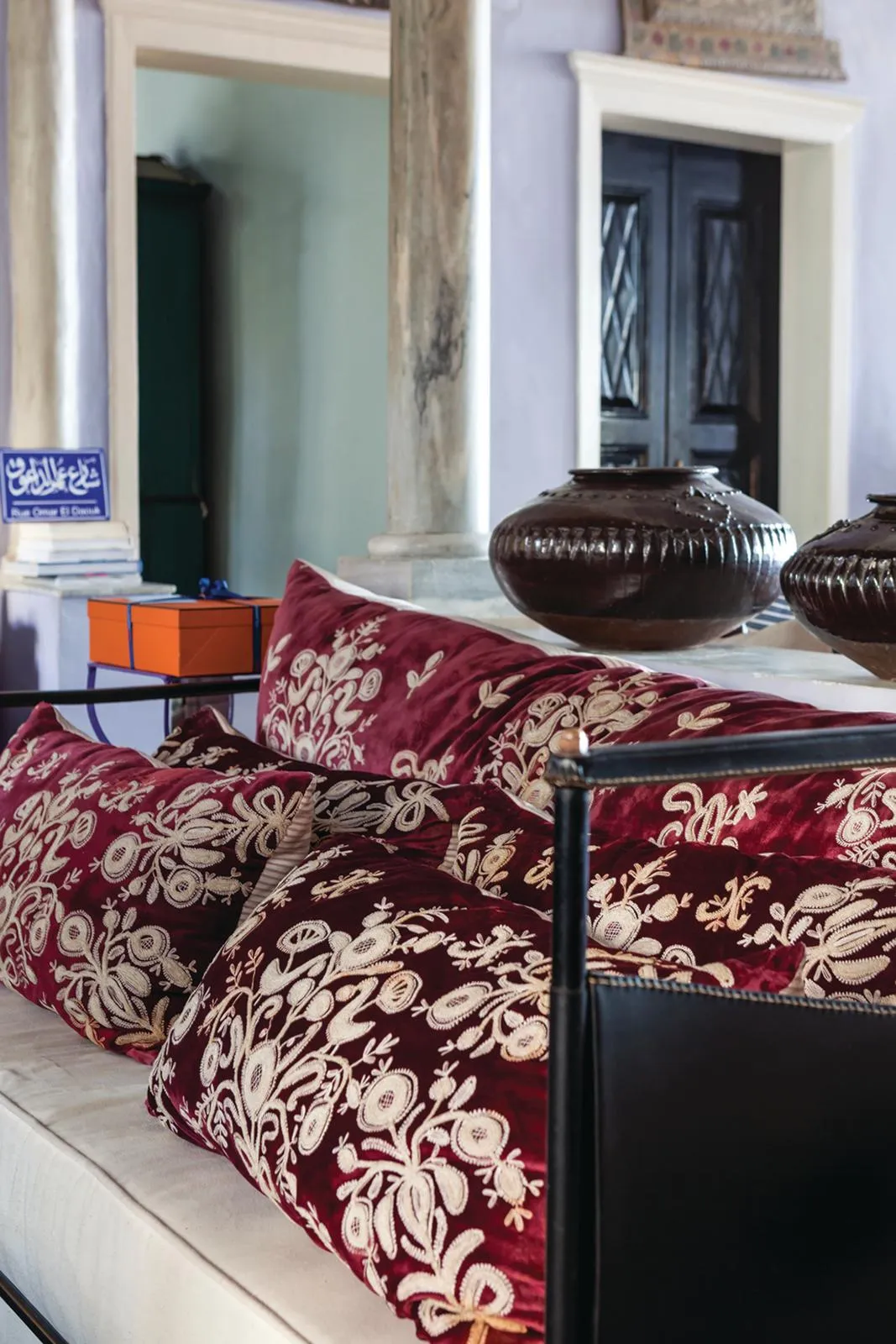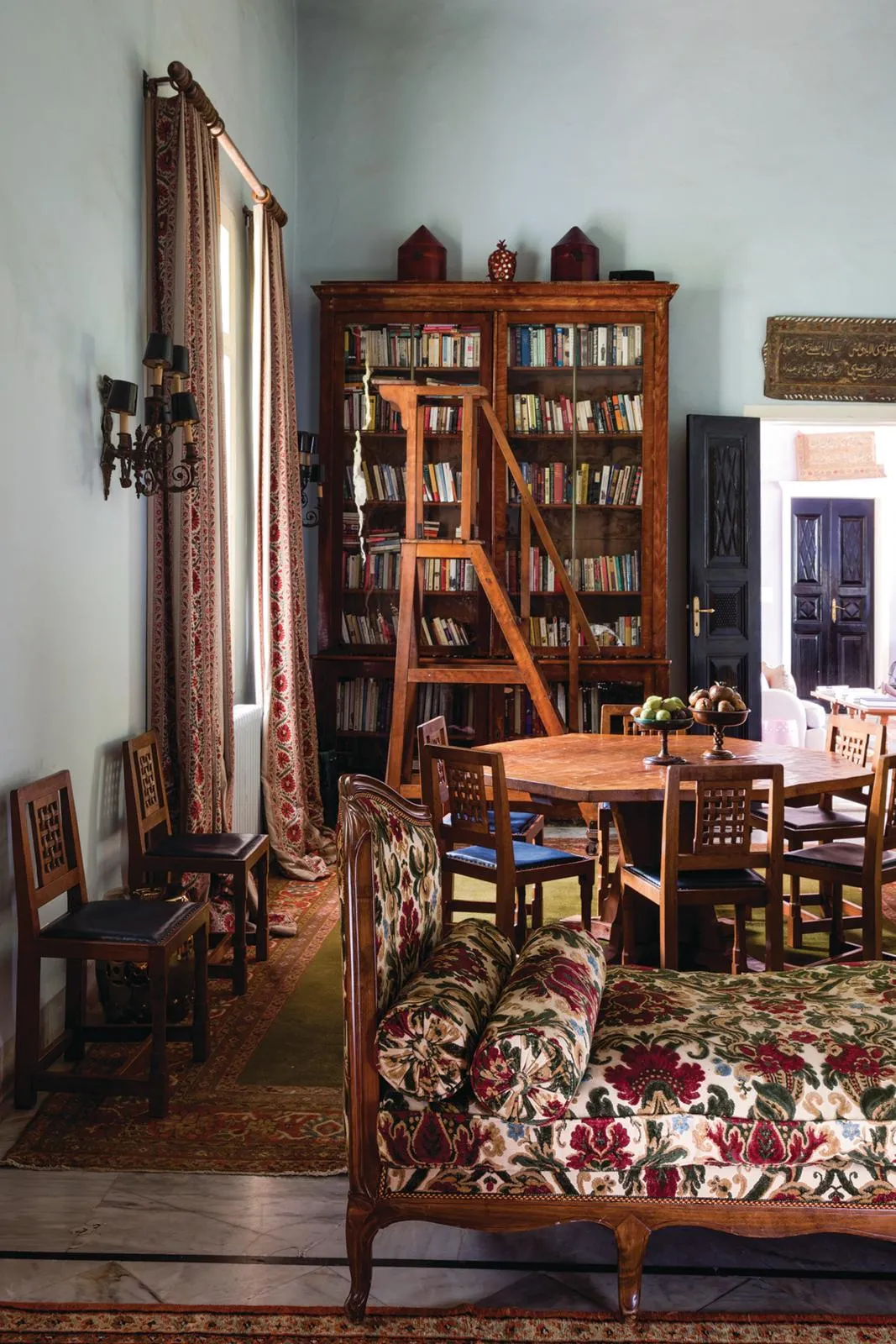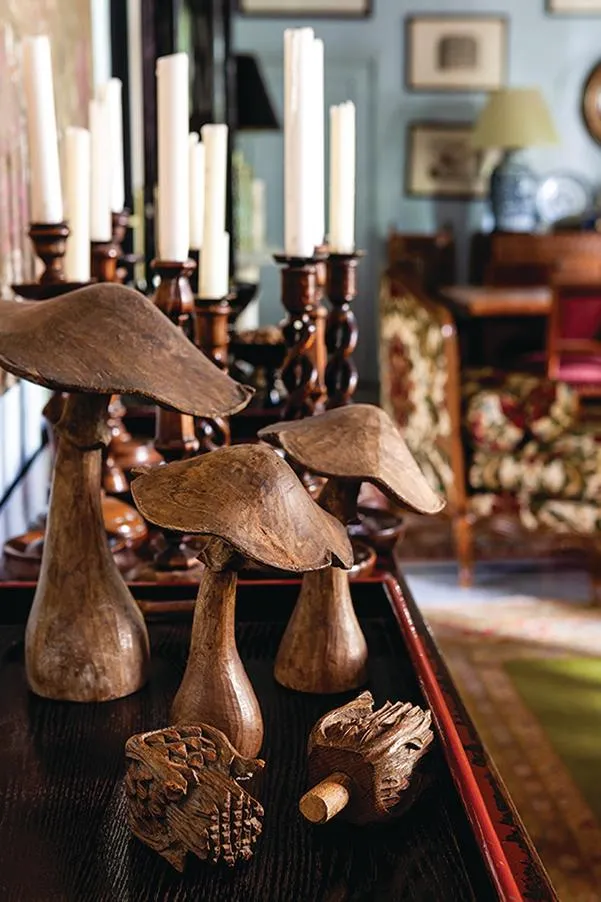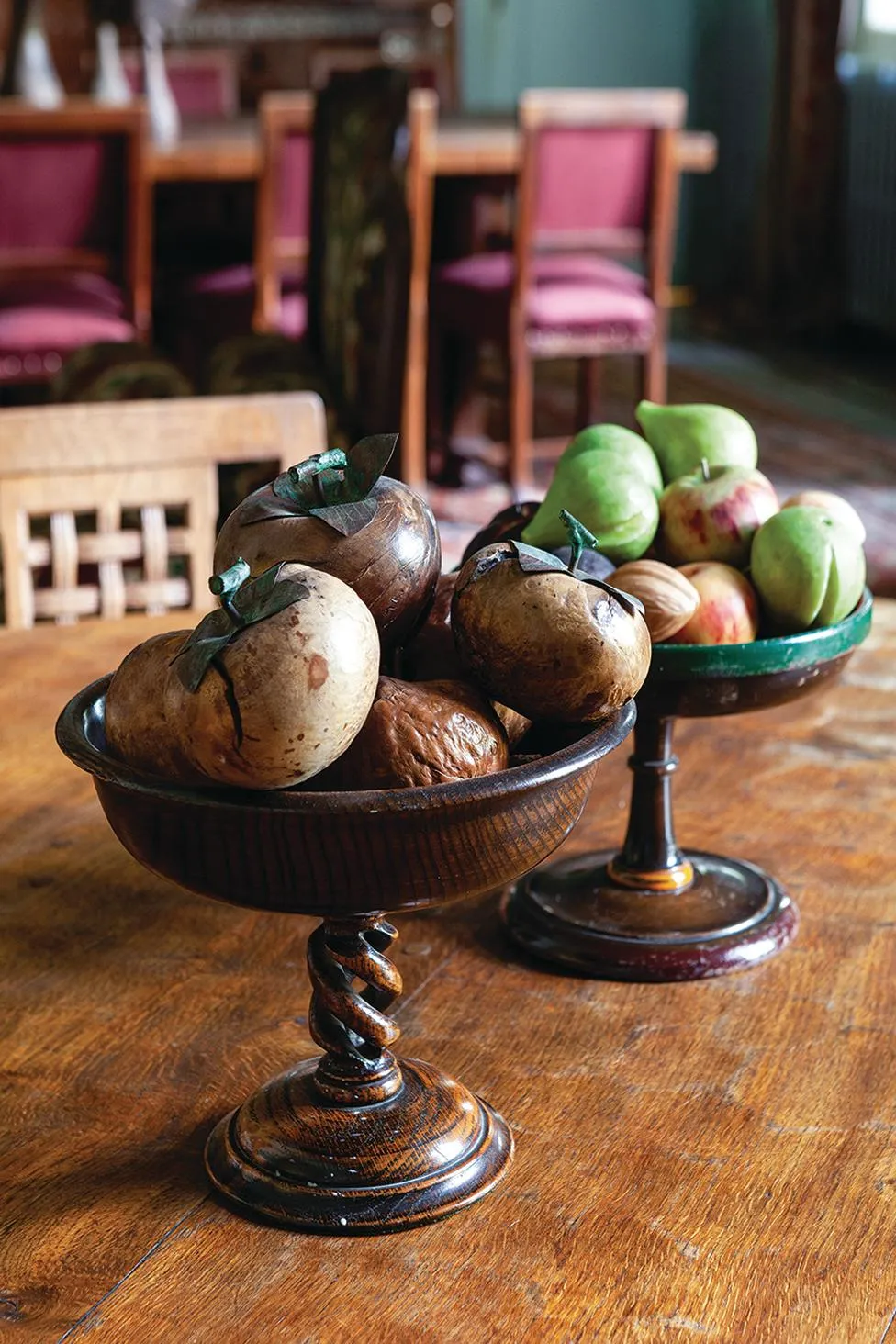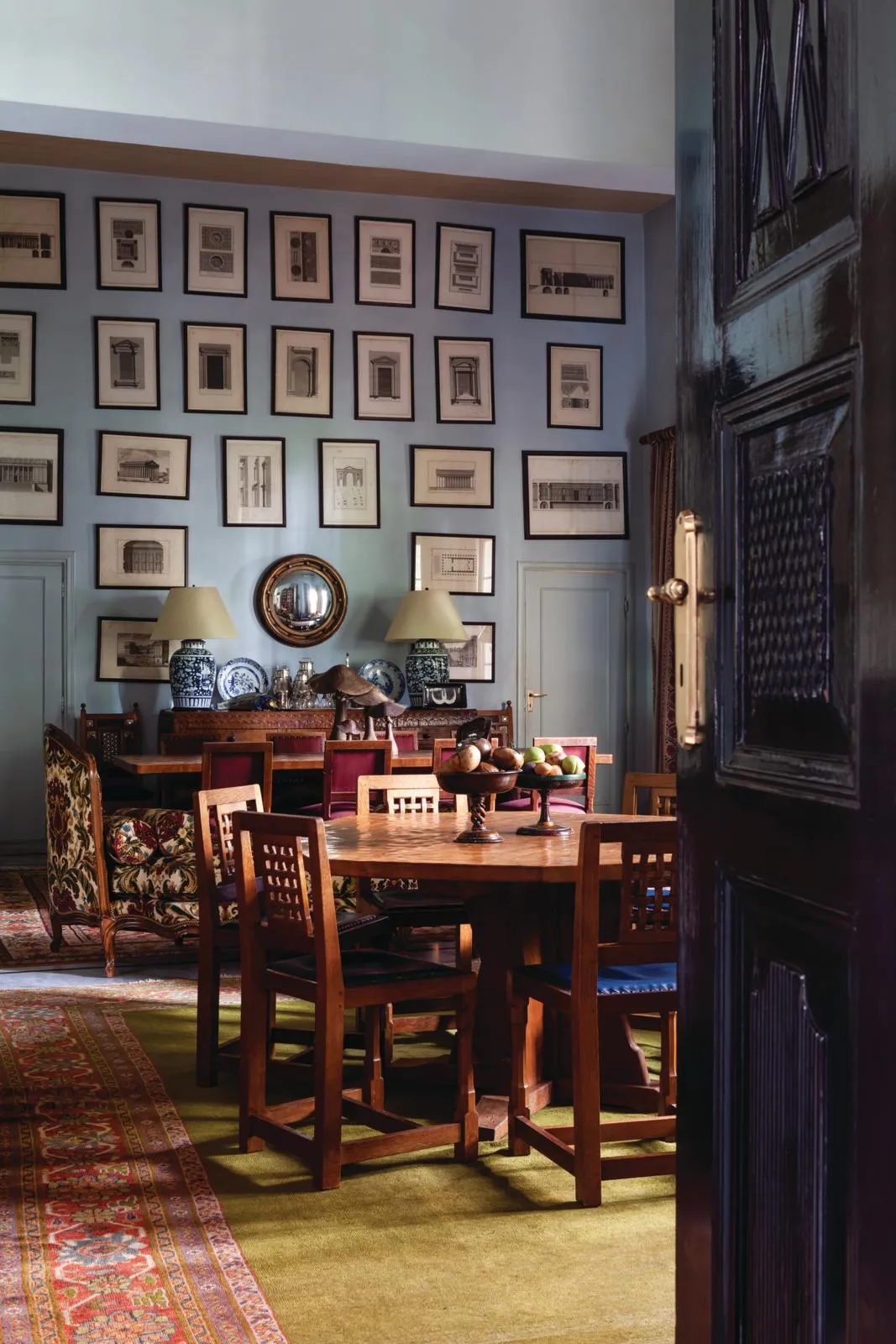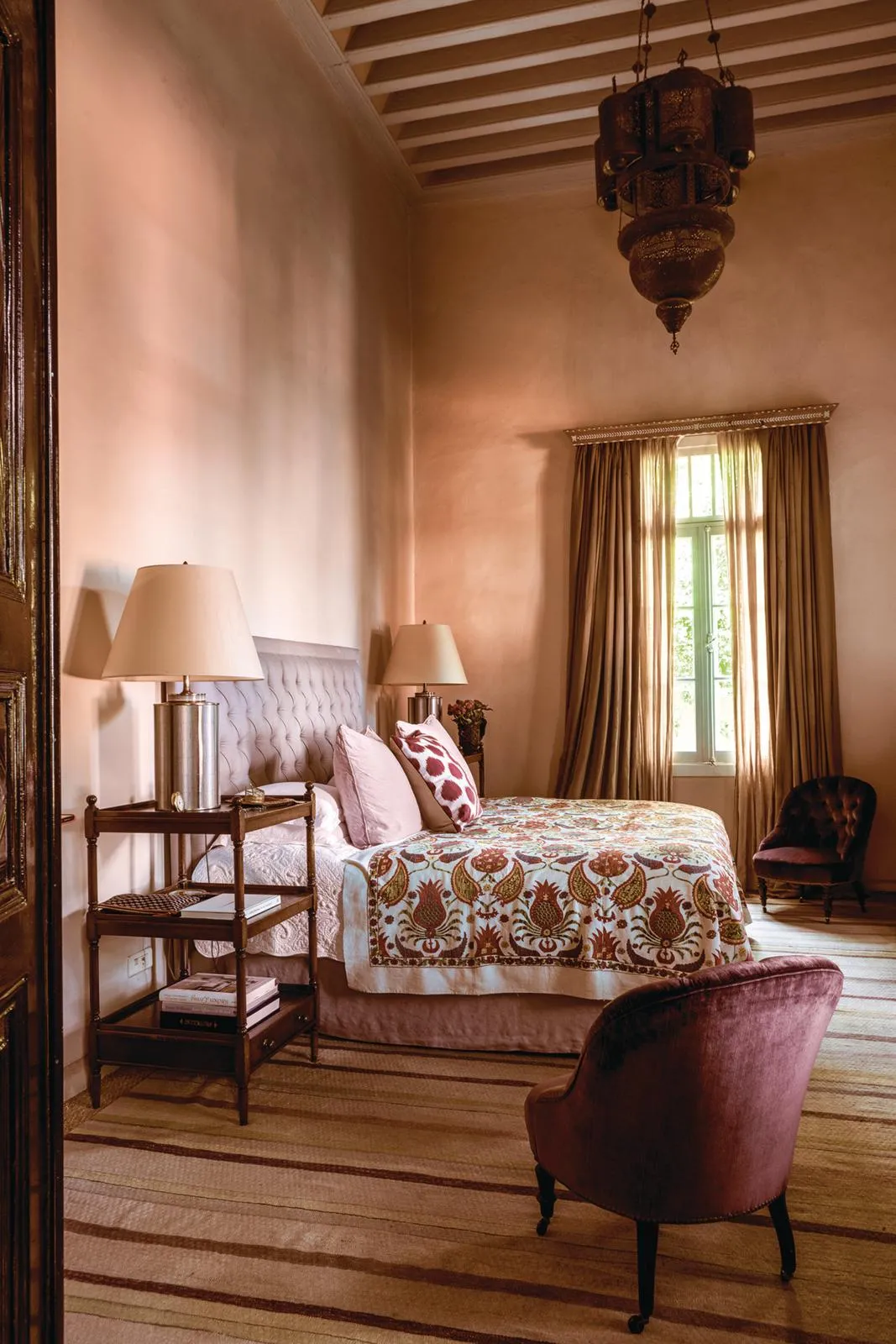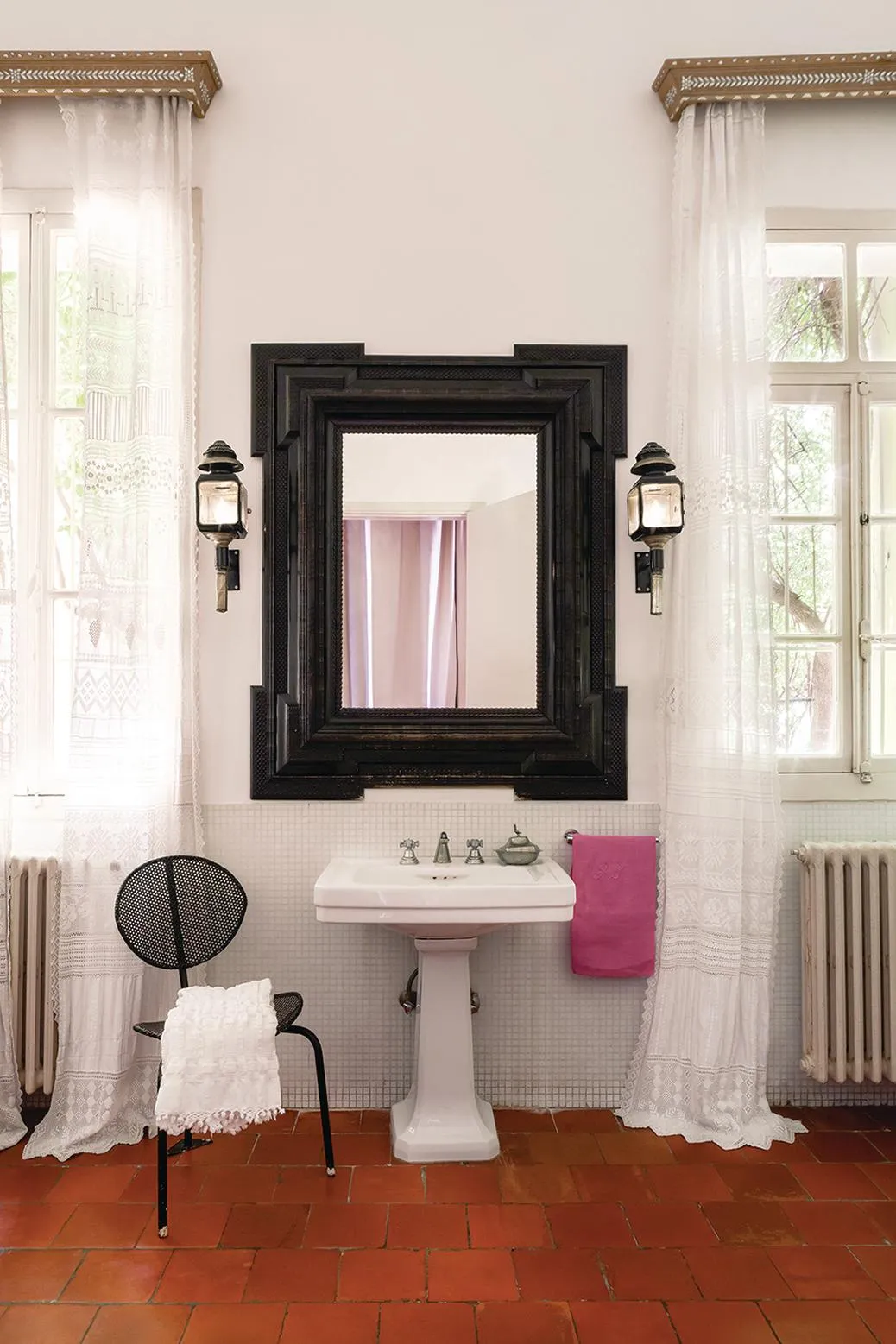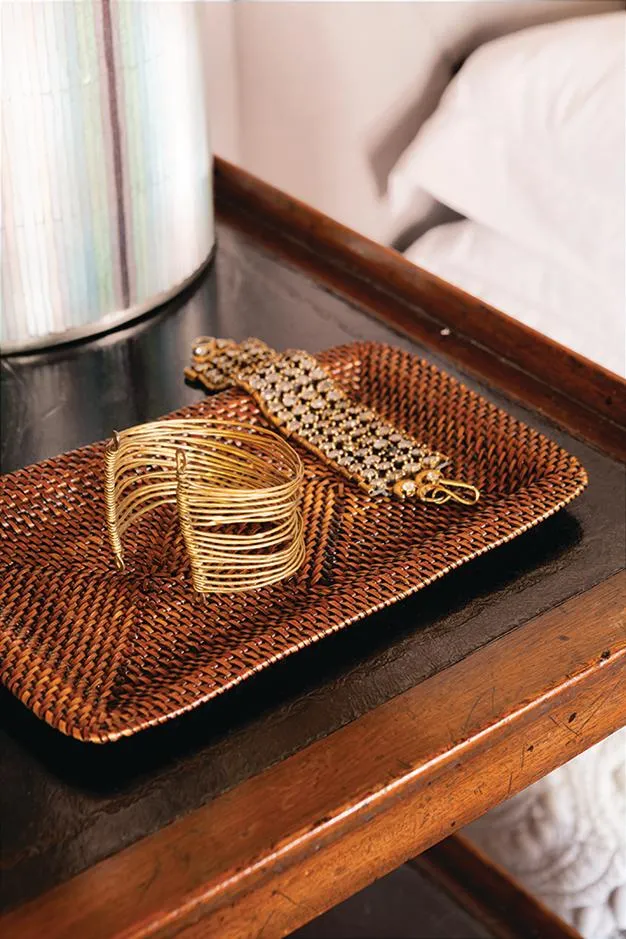Since Lebanon’s civil war ended three decades ago, Beirut has been rebuilt and revitalised into a city of soaring apartment blocks, pop-up art galleries, chic restaurants and bars. Risen from the rubble of the old souk there is now a gleaming shopping mall filled with luxe fashion brands such as Yves Saint Laurent and Louis Vuitton.
But, sadly, few of its oldest buildings remain – those that do are scarred by smoke and shelling. ‘It’s a tiny city,’ says interior designer May Daouk, who moved back to Beirut from New York 10 years ago. ‘There’s no planning authority and, like everywhere, it’s cheaper to tear things down and rebuild rather than preserve.’ She was, she admits, exceptionally lucky to find a charming, single-storey late 19th-century villa.
You might also like a romantic Regency villa in Bath
Situated in the smart Achrafieh district, the house is a tranquil oasis in the frenetic city. A walled garden provides privacy and a tree-shaded terrace offers a magical view of the Mediterranean. The move was prompted by her then-husband’s job and the plan was to stay for a year.
‘But you know how it is,’ she laughs. ‘I’m still here and my children are all grown up – my sons are living in New York and my daughter is in the UK!’ Fortunately, her work takes her back to New York several times a year, along with trips to Paris and London.
Brought up in Beirut by an English nanny, May was educated in Switzerland and Boston before taking a job as a receptionist for the interior decorator Bunny Williams in New York. ‘She is the grande dame of interior design,’ says May, explaining that her own career as a designer grew out of this chance appointment.
As soon as Bunny Williams was aware that her enthusiastic receptionist was fluent in several languages, it wasn’t long before May was attending European auctions for overseas clients. ‘I learned so much from Bunny,’ she says. ‘Above all, design is not about theory – it doesn’t matter whether pink and green go together, what matters is the objects. They’re what give soul to a house.’
May sees her home very much as a sanctuary, where she is surrounded by the things that she likes, the things that give her pleasure. And one of her great pleasures is mixing Eastern and Western aesthetics and cultures, combining old pieces with new, adding adventurous colours, and giving a contemporary twist to Middle Eastern elements: traditional drum-shaped garden seats, for example, are finished in a fuchsia glaze. ‘Bunny taught me to be unapologetic about colour,’ she says. ‘It’s all a matter of shade and scale.’
You might also like an interior designer's colourful 1920s apartment
The entrance hall, with its Louis XVI–style settees enlivened by bright ikat cushions, a 19th-century Italian mirror and an enormous star-shaped zinc ceiling pendant, is a masterclass in proportion. It’s the warm-up act to the spectacular high-ceilinged living room that sits at the centre of the house.
With lilac walls that run the length of the building, punctuated by doors leading to bedrooms, a dining room and kitchen, the room is huge and could easily host 200 people. But it’s not overwhelming, May insists, because ‘it’s broken down into little spaces’.
One such space lies beyond a dramatic triple arch that dominates the room. This feature, common to traditional Lebanese houses, effectively divides a quarter of the room from the rest, without cutting it off entirely. It is here that May has created a study, complete with a splendid 18th-century Italian chimneypiece which, despite appearances, was only fairly recently installed. She has furnished this space with a smart, brass-edged campaign desk, violet-lacquered bookshelves and a daybed.
‘The desk is English. The daybed is by Adnet finished with Hermès leather, and the cushions are Syrian,’ she explains. ‘It’s not about whether this matches that, it’s about making it personal.’ She is no more restrained by period than by ethnicity; nearby, a mid 20th-century tubular-metal garden seat rubs shoulders with two Victorian armchairs.
Another island of comfort lies at the opposite end of the living room, where three elegant fretwork windows echo the internal archway, and a plump chaise longue is positioned for maximum reading light. The middle of the space, meanwhile, is more sociable, with an inviting cluster of seating and side tables. What unifies this expansive and varied interior is May’s love of vibrant colours – specifically the striking lilac on the walls.
Beyond the living room, in the master suite, a custom-made striped kilim attests to May’s gift for discovering local suppliers. Her bathroom windows are hung with exquisite lace curtains made in the Chouf Mountains, to the south east of Beirut.
The dining room is an inspired creation that effectively melds two spaces. At one end, a rectangular table for formal dinners is centred against a wall hung with architectural prints of Lebanon’s ancient city of Baalbek; at the other, an octagonal Mouseman table and chairs are used for casual family meals.
As ever, the furniture is spectacularly diverse: Arabic chairs inlaid with mother-of-pearl; an antique double bergère; and a red lacquer sideboard. While May loves the objects that surround her, she’s not fussy about them. ‘I use antique fabrics but, if they get damaged, I just replace them,’ she says. ‘The black sofa in the dining room? It’s used mainly by the dog.’
A house should be as comfortable as it is beautiful, says May. ‘I don’t want to live in a showcase, I want to live in a home.’
